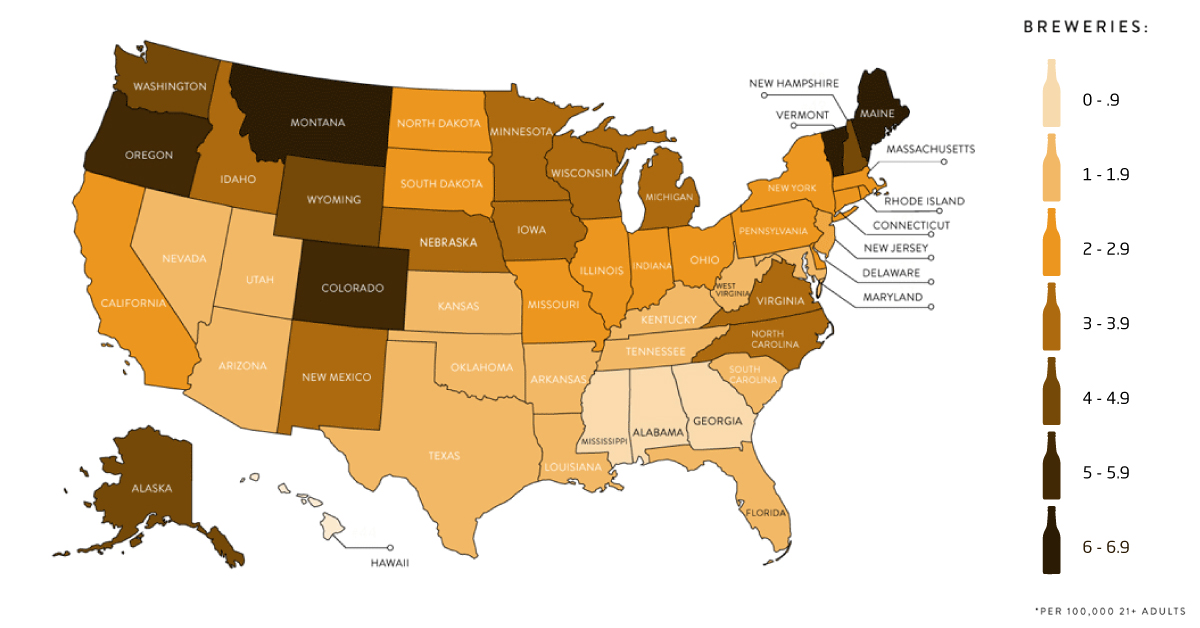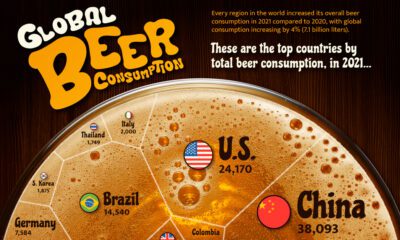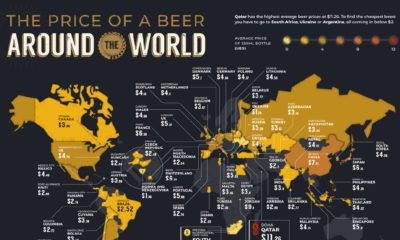Markets
Craft Beer Boom: The Numbers Behind the Industry’s Explosive Growth
All movements start with rebellion, and the craft beer revolution is no different.
Born from the frustration of mass-produced beer made from cheap ingredients, entrepreneurs went head-to-head with global brewery giants to showcase local and independent craftsmanship.
Suddenly, drinking beer became less about the alcoholic content and more about the quality and experience. Craft beer allowed for constantly changing flavors, recipes, and stories. With sales accounting for 24% of U.S. beer market worth over $114 billion, the global craft beer movement has been historic.
Which States Bring Home the Beer?
Today’s map from C+R research demonstrates the growth of the craft beer market, by ranking the U.S. states based on craft breweries per capita.
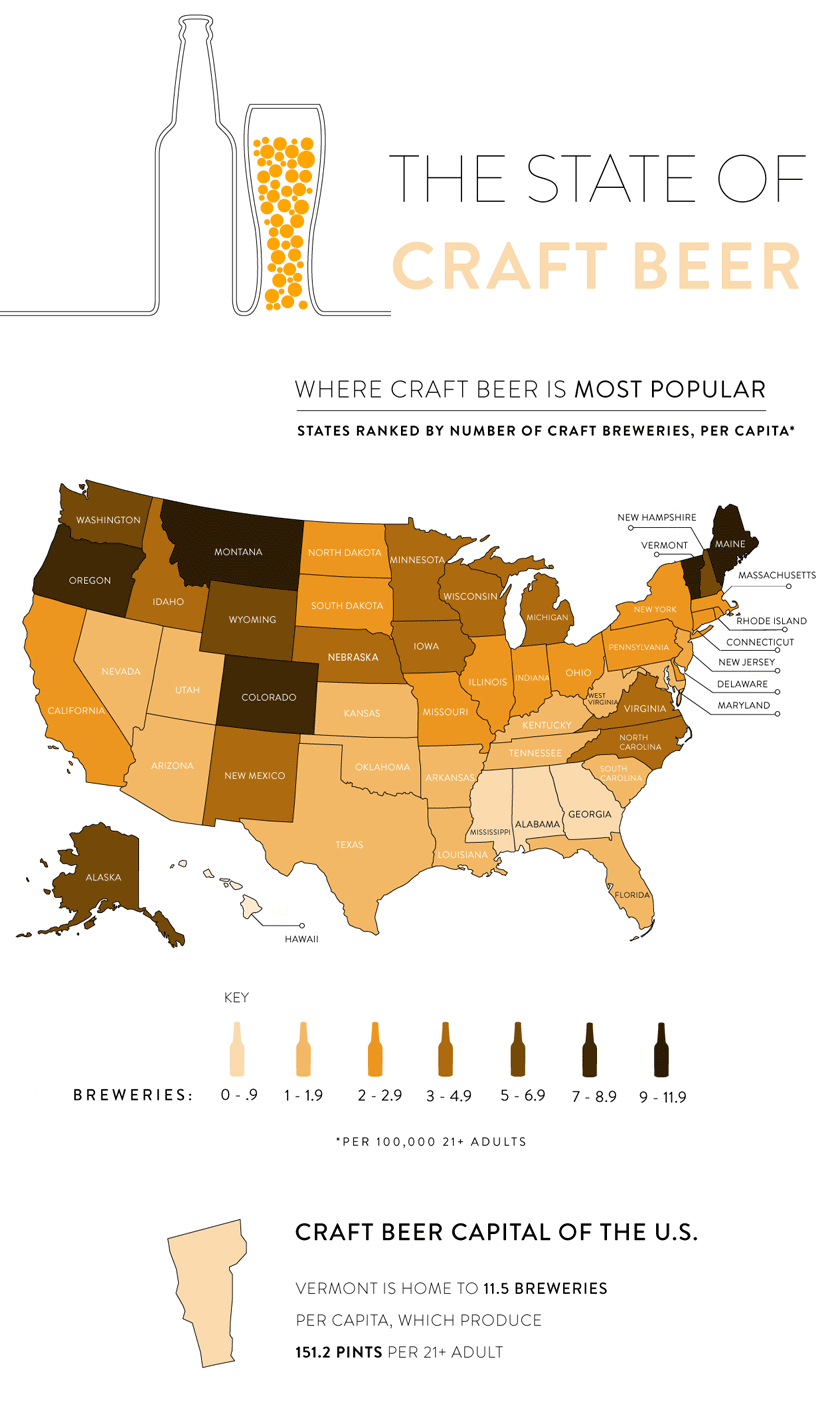
The data for this visualization comes from The Brewers Association—an American trade group of over 7,200 craft brewers, suppliers, and distributors, as well as the Alcohol and Tobacco Tax and Trade Bureau.
According to the data, Vermont has emerged as the craft beer capital of the U.S. with 11.5 breweries per 100,000 people. That’s equal to 151 pints of beer produced per drinking-age adult. Following closely behind are Montana and Maine, each with 9.6 breweries per capita.
You’ll notice that in Southern states such as Alabama, Georgia, and Mississippi, that there are only 0-0.9 breweries per capita. This is actually because of tighter liquor laws—for example, only 10 years ago, it was illegal to sell specialty beer in South Carolina that contained more alcohol content than a typical Budweiser.
Becoming a Brewery Nation
In 2008, there were only 1,574 breweries across the United States.
However, as you can see in the below data from the Brewers Association, the total amount of craft breweries, microbreweries, and brewpubs has climbed to 7,346 in just a decade.
| 2014 | 2015 | 2016 | 2017 | 2018 | Change ('17-'18) | |
|---|---|---|---|---|---|---|
| Regional Craft | 135 | 178 | 186 | 202 | 230 | 13.9% |
| Microbreweries | 2,076 | 2,626 | 3,251 | 3,933 | 4,522 | 15% |
| Brewpubs | 1,603 | 1,824 | 2,102 | 2,355 | 2,594 | 10.1% |
| Total Craft | 3,814 | 4,628 | 5,539 | 6,490 | 7,346 | 13.2% |
| Large/Non-craft | 46 | 44 | 67 | 106 | 104 | 1.9% |
| Total U.S. | 3,869 | 4,672 | 5,606 | 6,596 | 7,450 | 12.9% |
Of the three categories of craft beer, microbreweries have contributed the most to recent production growth. Last year, they accounted for 80% of this growth, up from 60% in 2017.
The term microbrewery refers to the maximum amount of beer the brewery can produce. For microbreweries, that number is 15,000 barrels (460,000 U.S. gallons) of beer per year. They also have to sell 25% or more of their beer on site, which is why we are witnessing a surge in breweries that double up as a restaurant or bar.
Comparing this data to figures on larger breweries available from the Breweries Association, it is clear that it is the larger, more established breweries that are feeling the heat. While their growth slows, more small breweries open, and sales are further cannibalized.
The Economic Impact of the Craft Beer Market
When it comes to pure dollars, C+R Research notes that Colorado comes in at #1 with an economic impact of $764 per person. Vermont is at the #2 spot with an economic impact of $667 per person, despite having a higher concentration of breweries per capita.
How do the rest of the states compare?
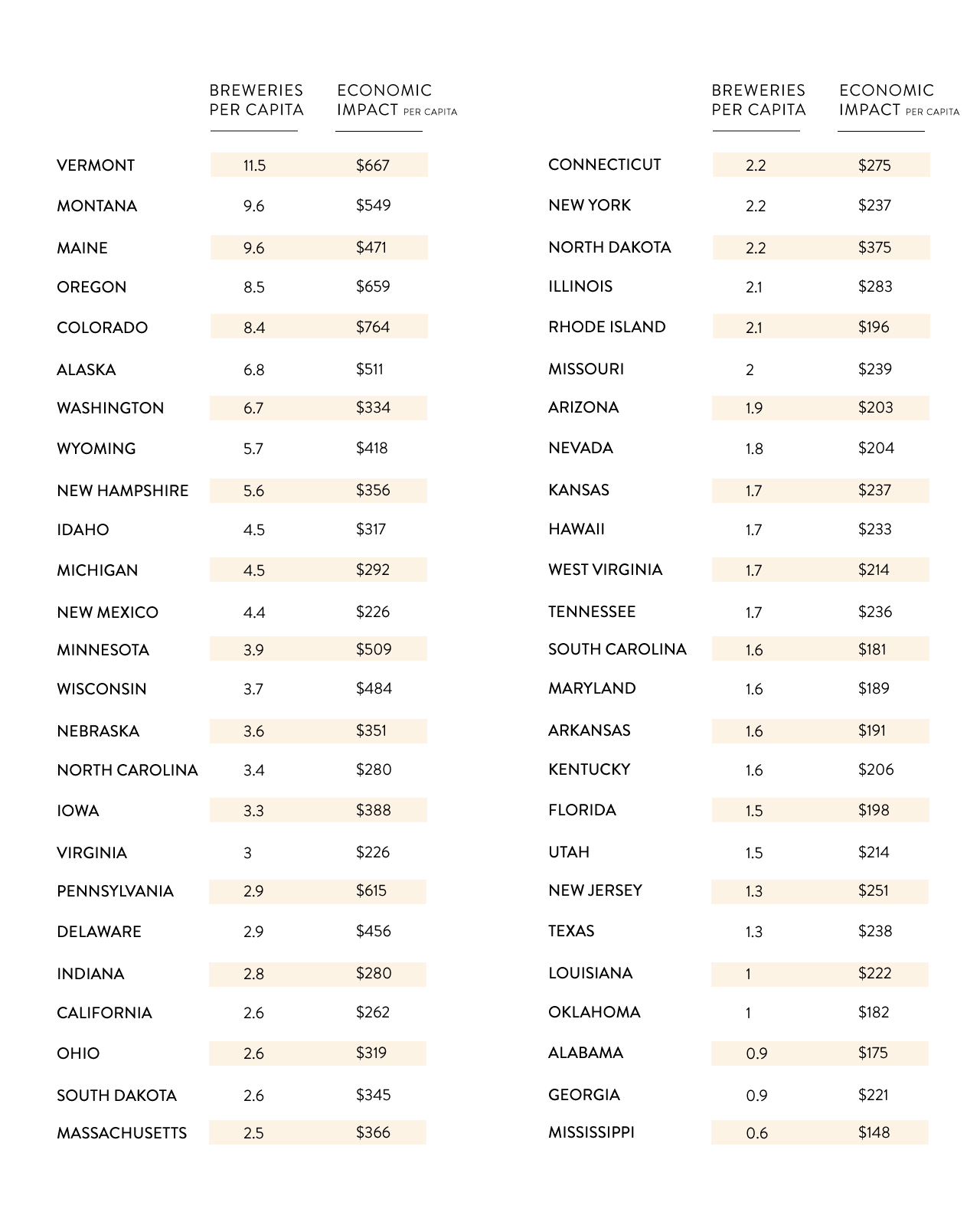
The global craft beer market is expected to reach $502.9 billion by 2025—while the craft brewing industry contributed $76.2 billion to the U.S. economy in 2017, including more than 500,000 jobs.
Will Craft Remain a Growth Category?
While many argue that craft beer is approaching its peak, the data is promising. Experimentation with new processes and ingredients will continue to drive the market forward.
Craft brewers all over the world are tapping into the novelty factor by exploring weird and wonderful innovations, like deer antler-infused beer and take-home brewing kits.
While the overall beer market lagged in sales by 0.8% last year, the craft brew category grew by 3.9% using the same measure. Further, craft still only makes up 13.2% in total beer volume in the U.S., meaning there is still plenty of market share to gain.
Economy
Economic Growth Forecasts for G7 and BRICS Countries in 2024
The IMF has released its economic growth forecasts for 2024. How do the G7 and BRICS countries compare?

G7 & BRICS Real GDP Growth Forecasts for 2024
The International Monetary Fund’s (IMF) has released its real gross domestic product (GDP) growth forecasts for 2024, and while global growth is projected to stay steady at 3.2%, various major nations are seeing declining forecasts.
This chart visualizes the 2024 real GDP growth forecasts using data from the IMF’s 2024 World Economic Outlook for G7 and BRICS member nations along with Saudi Arabia, which is still considering an invitation to join the bloc.
Get the Key Insights of the IMF’s World Economic Outlook
Want a visual breakdown of the insights from the IMF’s 2024 World Economic Outlook report?
This visual is part of a special dispatch of the key takeaways exclusively for VC+ members.
Get the full dispatch of charts by signing up to VC+.
Mixed Economic Growth Prospects for Major Nations in 2024
Economic growth projections by the IMF for major nations are mixed, with the majority of G7 and BRICS countries forecasted to have slower growth in 2024 compared to 2023.
Only three BRICS-invited or member countries, Saudi Arabia, the UAE, and South Africa, have higher projected real GDP growth rates in 2024 than last year.
| Group | Country | Real GDP Growth (2023) | Real GDP Growth (2024P) |
|---|---|---|---|
| G7 | 🇺🇸 U.S. | 2.5% | 2.7% |
| G7 | 🇨🇦 Canada | 1.1% | 1.2% |
| G7 | 🇯🇵 Japan | 1.9% | 0.9% |
| G7 | 🇫🇷 France | 0.9% | 0.7% |
| G7 | 🇮🇹 Italy | 0.9% | 0.7% |
| G7 | 🇬🇧 UK | 0.1% | 0.5% |
| G7 | 🇩🇪 Germany | -0.3% | 0.2% |
| BRICS | 🇮🇳 India | 7.8% | 6.8% |
| BRICS | 🇨🇳 China | 5.2% | 4.6% |
| BRICS | 🇦🇪 UAE | 3.4% | 3.5% |
| BRICS | 🇮🇷 Iran | 4.7% | 3.3% |
| BRICS | 🇷🇺 Russia | 3.6% | 3.2% |
| BRICS | 🇪🇬 Egypt | 3.8% | 3.0% |
| BRICS-invited | 🇸🇦 Saudi Arabia | -0.8% | 2.6% |
| BRICS | 🇧🇷 Brazil | 2.9% | 2.2% |
| BRICS | 🇿🇦 South Africa | 0.6% | 0.9% |
| BRICS | 🇪🇹 Ethiopia | 7.2% | 6.2% |
| 🌍 World | 3.2% | 3.2% |
China and India are forecasted to maintain relatively high growth rates in 2024 at 4.6% and 6.8% respectively, but compared to the previous year, China is growing 0.6 percentage points slower while India is an entire percentage point slower.
On the other hand, four G7 nations are set to grow faster than last year, which includes Germany making its comeback from its negative real GDP growth of -0.3% in 2023.
Faster Growth for BRICS than G7 Nations
Despite mostly lower growth forecasts in 2024 compared to 2023, BRICS nations still have a significantly higher average growth forecast at 3.6% compared to the G7 average of 1%.
While the G7 countries’ combined GDP is around $15 trillion greater than the BRICS nations, with continued higher growth rates and the potential to add more members, BRICS looks likely to overtake the G7 in economic size within two decades.
BRICS Expansion Stutters Before October 2024 Summit
BRICS’ recent expansion has stuttered slightly, as Argentina’s newly-elected president Javier Milei declined its invitation and Saudi Arabia clarified that the country is still considering its invitation and has not joined BRICS yet.
Even with these initial growing pains, South Africa’s Foreign Minister Naledi Pandor told reporters in February that 34 different countries have submitted applications to join the growing BRICS bloc.
Any changes to the group are likely to be announced leading up to or at the 2024 BRICS summit which takes place October 22-24 in Kazan, Russia.
Get the Full Analysis of the IMF’s Outlook on VC+
This visual is part of an exclusive special dispatch for VC+ members which breaks down the key takeaways from the IMF’s 2024 World Economic Outlook.
For the full set of charts and analysis, sign up for VC+.
-

 Markets1 week ago
Markets1 week agoU.S. Debt Interest Payments Reach $1 Trillion
-

 Business2 weeks ago
Business2 weeks agoCharted: Big Four Market Share by S&P 500 Audits
-

 Real Estate2 weeks ago
Real Estate2 weeks agoRanked: The Most Valuable Housing Markets in America
-

 Money2 weeks ago
Money2 weeks agoWhich States Have the Highest Minimum Wage in America?
-

 AI2 weeks ago
AI2 weeks agoRanked: Semiconductor Companies by Industry Revenue Share
-

 Markets2 weeks ago
Markets2 weeks agoRanked: The World’s Top Flight Routes, by Revenue
-

 Demographics2 weeks ago
Demographics2 weeks agoPopulation Projections: The World’s 6 Largest Countries in 2075
-

 Markets2 weeks ago
Markets2 weeks agoThe Top 10 States by Real GDP Growth in 2023

